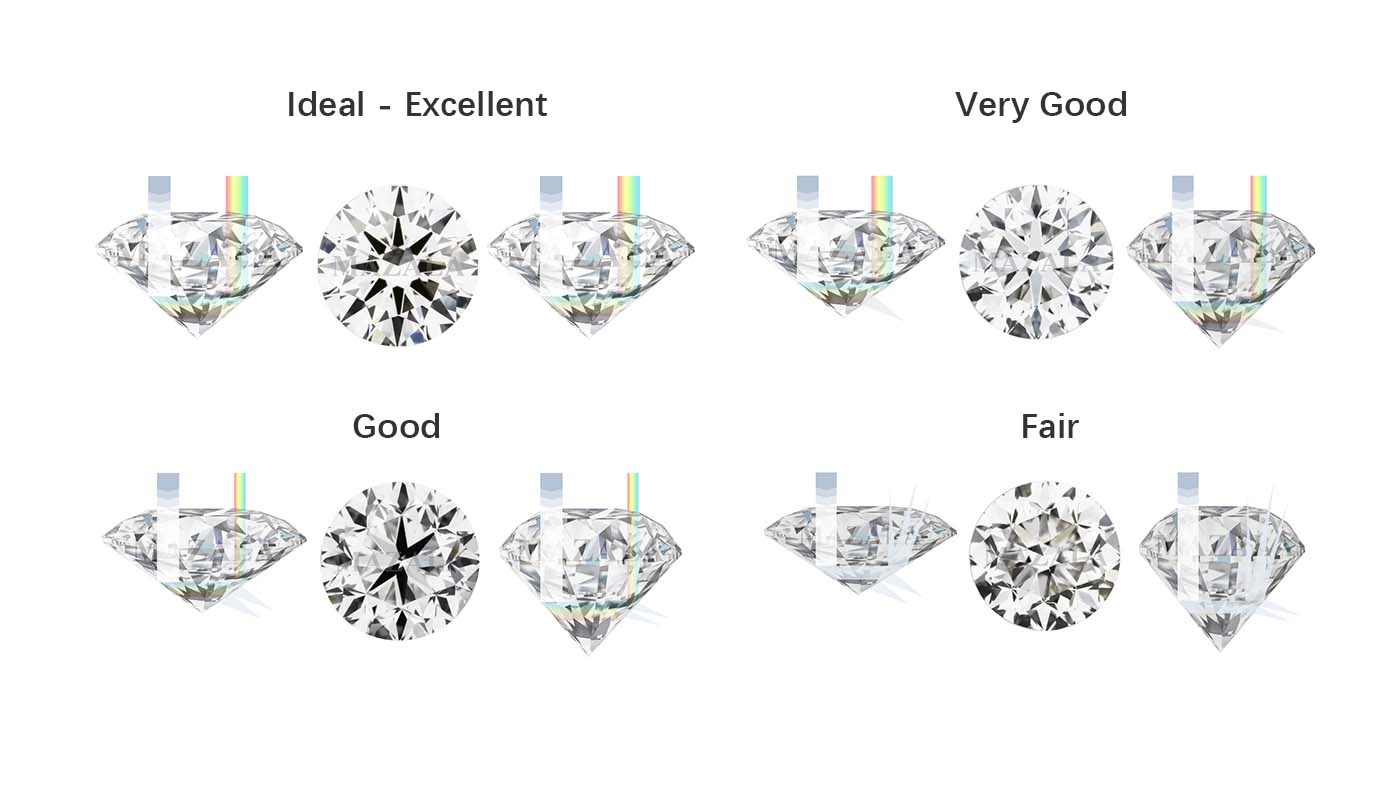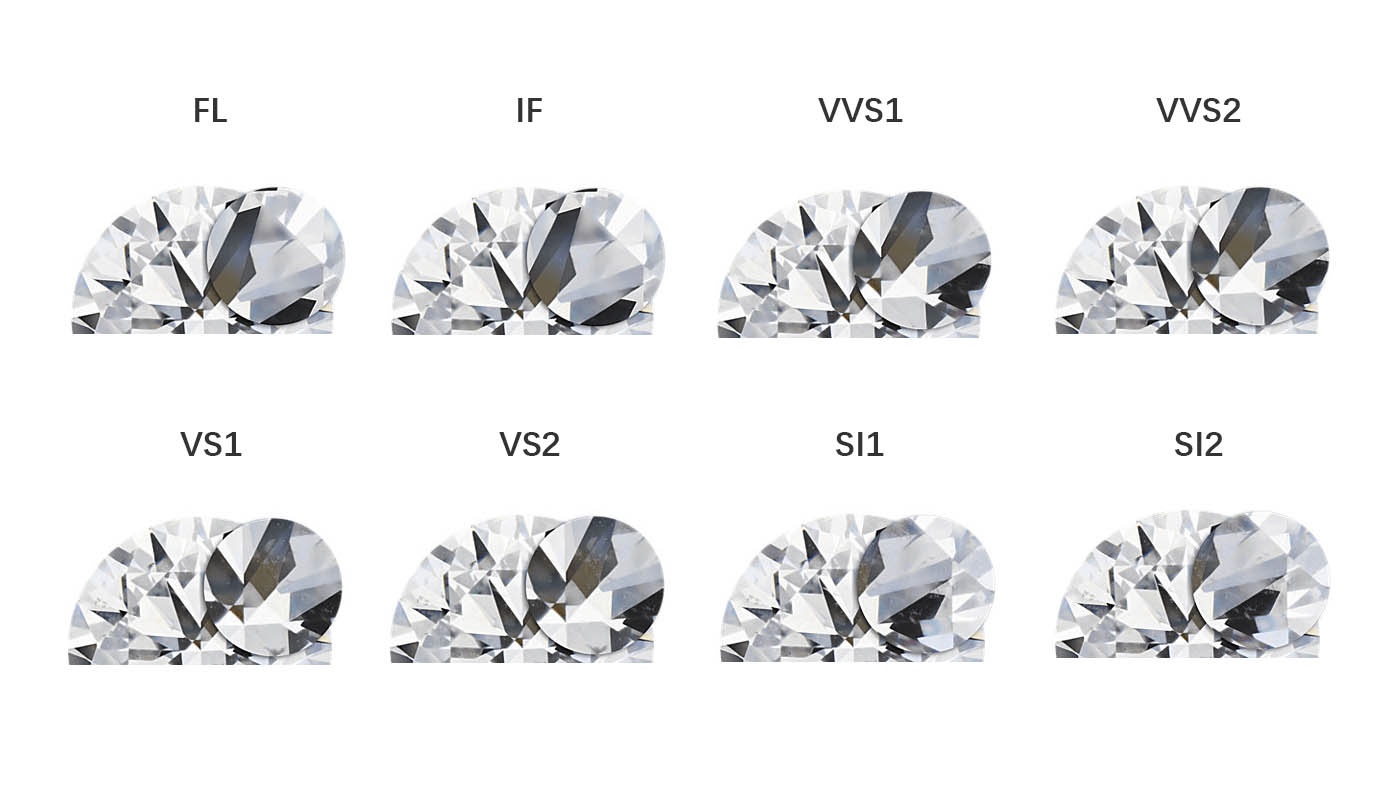We are in pre-launch phase. Stay tuned for the official release!
×

Getting a quick understanding of diamonds through their four attributes: color, cut, clarity, and carat can help you easily find the diamond you desire. Below is an introduction to these attributes.
Color
The reference to color in diamonds pertains to the lack of hue present, with a grading scale spanning from D (indicating complete colorlessness) to Z.
D : Absolutely Colorless
E : Colorless , Exceptionally White
F : Colorless , Faint Color , Still considered a “colorless”
G : Near-colorless
We do not offer diamonds below the G color grade, allowing you to quickly find diamonds of better color grades on our website.

The proportion and arrangement of a diamond's facets, referred to as its cut, dictate its brilliance, sparkle, and fire. This aspect is graded on a scale ranging from Super Ideal to Poor.

Lab-grown diamonds undergo necessary condition control in laboratories, resulting in the majority of them having cuts above "Excellent" (EX). Therefore, you can easily find a large number of lab-grown diamonds with "Ideal" (ID) and "Excellent" (EX) cuts on our website .
Clarity indicates the degree to which a diamond is free from internal inclusions and surface imperfections, with the scale varying from Internally Flawless at the highest level to Included, which signifies the presence of imperfections.

Carat is a unit of measurement that describes the weight of a diamond, not its size. Generally speaking, when other 3C parameters of diamonds are the same, diamonds with larger carats are rarer and relatively more expensive. Due to the high price of natural diamonds, many people who prefer large-carat diamonds give up purchasing them because of the expensive price. Lab-grown diamonds make a good complement to this shortage. You can buy large-carat lab-grown diamonds at a lower cost, and these large-carat lab-grown diamonds have the same physical structure as natural diamonds.

This image is sourced from diamonds.pro
ABOUT
EDUCATION
· Blog
ORDER



Subscribe Or Sign up
Send me Harry Gleam news, updates and offers.